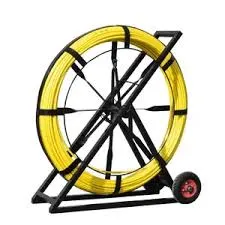
-
 Afrikaans
Afrikaans -
 Albanian
Albanian -
 Amharic
Amharic -
 Arabic
Arabic -
 Armenian
Armenian -
 Azerbaijani
Azerbaijani -
 Basque
Basque -
 Belarusian
Belarusian -
 Bengali
Bengali -
 Bosnian
Bosnian -
 Bulgarian
Bulgarian -
 Catalan
Catalan -
 Cebuano
Cebuano -
 Corsican
Corsican -
 Croatian
Croatian -
 Czech
Czech -
 Danish
Danish -
 Dutch
Dutch -
 English
English -
 Esperanto
Esperanto -
 Estonian
Estonian -
 Finnish
Finnish -
 French
French -
 Frisian
Frisian -
 Galician
Galician -
 Georgian
Georgian -
 German
German -
 Greek
Greek -
 Gujarati
Gujarati -
 Haitian Creole
Haitian Creole -
 hausa
hausa -
 hawaiian
hawaiian -
 Hebrew
Hebrew -
 Hindi
Hindi -
 Miao
Miao -
 Hungarian
Hungarian -
 Icelandic
Icelandic -
 igbo
igbo -
 Indonesian
Indonesian -
 irish
irish -
 Italian
Italian -
 Japanese
Japanese -
 Javanese
Javanese -
 Kannada
Kannada -
 kazakh
kazakh -
 Khmer
Khmer -
 Rwandese
Rwandese -
 Korean
Korean -
 Kurdish
Kurdish -
 Kyrgyz
Kyrgyz -
 Lao
Lao -
 Latin
Latin -
 Latvian
Latvian -
 Lithuanian
Lithuanian -
 Luxembourgish
Luxembourgish -
 Macedonian
Macedonian -
 Malgashi
Malgashi -
 Malay
Malay -
 Malayalam
Malayalam -
 Maltese
Maltese -
 Maori
Maori -
 Marathi
Marathi -
 Mongolian
Mongolian -
 Myanmar
Myanmar -
 Nepali
Nepali -
 Norwegian
Norwegian -
 Norwegian
Norwegian -
 Occitan
Occitan -
 Pashto
Pashto -
 Persian
Persian -
 Polish
Polish -
 Portuguese
Portuguese -
 Punjabi
Punjabi -
 Romanian
Romanian -
 Russian
Russian -
 Samoan
Samoan -
 Scottish Gaelic
Scottish Gaelic -
 Serbian
Serbian -
 Sesotho
Sesotho -
 Shona
Shona -
 Sindhi
Sindhi -
 Sinhala
Sinhala -
 Slovak
Slovak -
 Slovenian
Slovenian -
 Somali
Somali -
 Spanish
Spanish -
 Sundanese
Sundanese -
 Swahili
Swahili -
 Swedish
Swedish -
 Tagalog
Tagalog -
 Tajik
Tajik -
 Tamil
Tamil -
 Tatar
Tatar -
 Telugu
Telugu -
 Thai
Thai -
 Turkish
Turkish -
 Turkmen
Turkmen -
 Ukrainian
Ukrainian -
 Urdu
Urdu -
 Uighur
Uighur -
 Uzbek
Uzbek -
 Vietnamese
Vietnamese -
 Welsh
Welsh -
 Bantu
Bantu -
 Yiddish
Yiddish -
 Yoruba
Yoruba -
 Zulu
Zulu


Oct . 07, 2024 12:50 Back to list
types of chain pulley block
Types of Chain Pulley Blocks An Overview
Chain pulley blocks, commonly known as chain hoists, are essential tools in various industries, providing efficient lifting and lowering capabilities for heavy loads. These devices utilize a system of chains, pulleys, and gears to amplify the force applied, allowing one person to lift substantial weights with ease. Understanding the different types of chain pulley blocks is crucial for selecting the right equipment for specific applications.
1. Manual Chain Pulley Blocks
Manual chain pulley blocks are the most common and cost-effective type. They operate by hand, using a chain to lift heavy loads mechanically. The user pulls on the hand chain, which rotates the lifting mechanism and raises the load. This type of chain block is ideal for situations where electricity is not available, or where lifting needs are infrequent. They are popular in construction sites, workshops, and warehouses for their straightforward operation and portability.
2. Electric Chain Hoists
Electric chain hoists are powered by electric motors, enabling the lifting and lowering of heavy objects at a much faster rate compared to manual blocks. These hoists are perfect for operations requiring frequent lifting and are widely used in manufacturing industries, warehouses, and construction. Electric chain hoists come with various features, such as remote controls and overload protection systems, ensuring user safety and convenience. They handle heavier loads efficiently, making them suitable for more demanding applications.
Air chain hoists, powered by compressed air, offer a unique alternative to electric options. These hoists are commonly used in industries where flammable materials are present, as they eliminate the risk of electrical sparks. Air-powered models are lightweight, and their lifting speed can be easily adjusted, providing additional flexibility in various lifting tasks. They are popular in automotive repair shops and more hazardous environments.
types of chain pulley block

4. Hydraulic Chain Hoists
Hydraulic chain hoists utilize hydraulic power to lift heavy loads, providing incredible efficiency and strength. They are particularly beneficial in industrial settings where high-load handling is required. Hydraulic hoists can lift heavier weights with less effort compared to their manual counterparts, making them ideal for heavy machinery and construction applications. Their design often includes safety features such as overload protection and emergency stop buttons.
5. Variable Speed Chain Hoists
Variable speed chain hoists allow operators to control the lifting speed of the load, which can be critical in delicate operations where precision is needed. These hoists can be manual, electric, or pneumatic, but the defining feature is their ability to adjust speed during operation. They are commonly used in theaters, studios, and other settings where load manipulation precision is paramount.
6. Portable Chain Hoists
Portable chain hoists provide the convenience of portability, making them suitable for various job sites. Their lightweight design allows them to be easily transported and set up whenever needed. These chains are often manual or electric and are ideal for smaller lifting tasks or temporary setups at different locations, such as in construction, repair jobs, or events.
Conclusion
In conclusion, chain pulley blocks come in various types, each designed for specific lifting needs and environments. From manual chain hoists to advanced electric, air, hydraulic, and variable-speed options, the choice of a chain pulley block depends on load weight, frequency of use, and the specific operational environment. By understanding the characteristics and applications of each type, businesses and individuals can make informed decisions that enhance safety and efficiency in lifting operations. Whether you are in construction, manufacturing, or any other field requiring lifting solutions, selecting the appropriate chain pulley block will significantly contribute to successful and safe operations.
Latest news
What Are Construction Tools and How Are They Used?
NewsJul.11,2025
Professional-Grade Duct Rodding Tools for Superior Cable Installation
NewsJul.11,2025
Enhancing Safety and Efficiency with Modern Hot Stick Solutions
NewsJul.11,2025
Empowering Cable Installation with Advanced Rodder Solutions
NewsJul.11,2025
Elevate Your Cable Installation Projects with Cable Pulling Tools
NewsJul.11,2025
Efficient Cable Handling Solutions: Cable Rollers for Sale
NewsJul.11,2025











